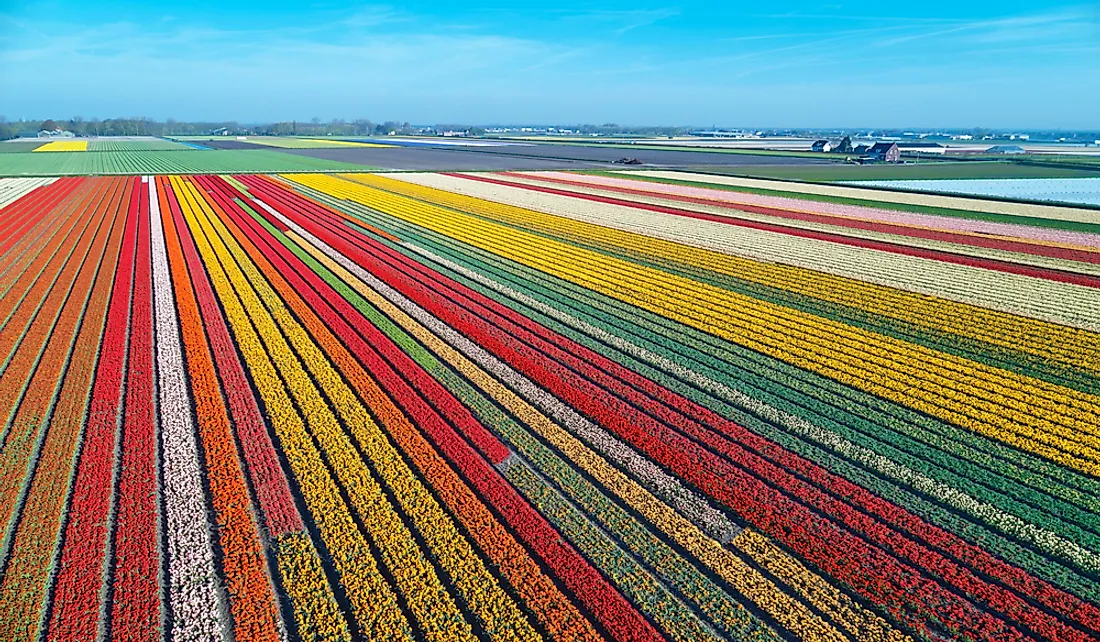What Are The Major Natural Resources Of The Netherlands?

The Netherlands is a European nation with an economy that is ranked among the top 20 globally. In 2018, the Netherlands GDP was ranked as the 17th highest in the world at $909 billion. The economic success of the Netherlands is due to different factors such as the proper utilization of the country's natural resources and favorable government policies. The Netherlands has a vast array of natural resources which include the country's beautiful scenery, arable land, fish, and natural gas among others.
Natural Resources
Arable Land
In 2015, the arable land in the country accounted for about 30% of the total area in the Netherlands. From 2005 to 2015 the size of arable land in the Netherlands has been fluctuating reaching its highest level in 2005 when it accounted for roughly 33% of the country's total land area. It reached its lowest level in 2011 when it made up approximately 29.8% of the country's entire land area. The agriculture sector is a vital industry in the Netherlands as it contributed approximately 1.6% of the country's GDP in 2015. The Netherlands' labor department estimated that about 1.2% of the country's labor force was employed in the agricultural sector in 2015. Some of the most important crops grown in the Netherlands include tomatoes, chilies, and flowers. Most of the agricultural products from the Netherlands are exported to other nations, and it is one of the country's major foreign exchange earners. The government of the Netherlands has put in place several measures to grow the country's agricultural industry. The government has asked farmers to reduce their reliance on chemicals to improve the quality of the food they grow. In 2017, it was reported that farmers in the Netherlands had almost eliminated the use of pesticides on crops grown in greenhouses.
Forests
According to data from the World Bank in 2015, forests covered roughly 11.1 6% of the total area of the Netherlands. The data also showed that forest cover in the Netherlands had been increasing from 2005 to 2015. Private individuals own approximately 33% of the forests in the Netherlands while the national government owns 34% of the forests. Local authorities and nature conservation organizations own the rest. The most common variety of trees in the Netherlands' forest includes oak and Scots pine. Some of the most famous forests in the Netherlands include Appèlbergen, Bevrijdingsbos, and Geelders. The timber sector is an essential industry in the Netherlands; however, it faces several major challenges such as the high cost of harvesting and low price for timber products in the European market. The stakeholders in the Netherlands' timber industry have suggested several measures to grow the country's timber sector. In 2016, it was reported that the Dutch government had put in place an ambitious plan to increase the country's forest cover by almost 25% over the next 30 years. The plan is aimed at reducing the Dutch carbon footprint as well as increasing the amount of timber produced in the country.
Natural Gas
In 2015, it was estimated that the Netherlands' had approximately 25% of the natural gas reserves in the EU. The most important natural gas field in the Netherlands is the Groningen Gas Field. The field was discovered in 1959 and is Europe's largest as well as the tenth largest in the world. The Groningen Field Began producing natural gas in 1963, and during the first decade of production, it produced roughly 3.57 trillion cubic feet of natural gas each year. The production later decreased to 1.25 trillion cubic feet every year. In 2004, it was estimated that the field accounted for about 50% of the natural gas produced in the Netherlands. In 2009, it was estimated that the field had produced about 60.7 trillion cubic feet which was approximately 60% of its total reserves. The government estimated that the rest of the natural gas in the field could last for at least 50 years. In 2014, the Dutch government decided to reduce production from the field because it was believed to cause an increase in the number of earthquakes in the areas. The Dutch government announced plans to close the operation by 2030. The government of the Netherlands has also urged the residents to reduce natural gas consumption to reduce the country's carbon footprint.
Fish
The large fish reserves within the territorial waters of the Netherlands are some of the country’s important natural resources. Some of the most common fish in the Netherlands include sea bass, common roach, and bream. The Netherlands is popular with sports fishermen, and some of the country's most famous sports fishing destinations are the Wadden Islands and Zeeland Delta. Sports fishers in the Netherlands have to obtain a fishing license known as VISpas which allows the holder to fish all over the country.
Beautiful Scenery
The Netherlands has been blessed with a variety of beautiful sites which is among the country’s natural resources. Some of the most famous sites in the Netherlands include the Hoge Veluwe National Park, Keukenhof, and Giethoorn. The tourism industry is vital to the Netherlands and it employed about 9.6% of the country's labor force and contributed approximately 5.4% to the country’s GDP in 2017. Most of the visitors to the Netherlands come from other European nations such as Germany, the United Kingdom, and France. Visitors from Canada and the United States also account for a significant portion of the tourists to the Netherlands.
Growth of the Dutch Economy
The IMF estimated that in 2019 the GDP of the Netherlands would increase to $933 billion from $909 billion in 2018. The organization believes that some of the industries that will drive the growth of the Dutch economy include agriculture and tourism.











